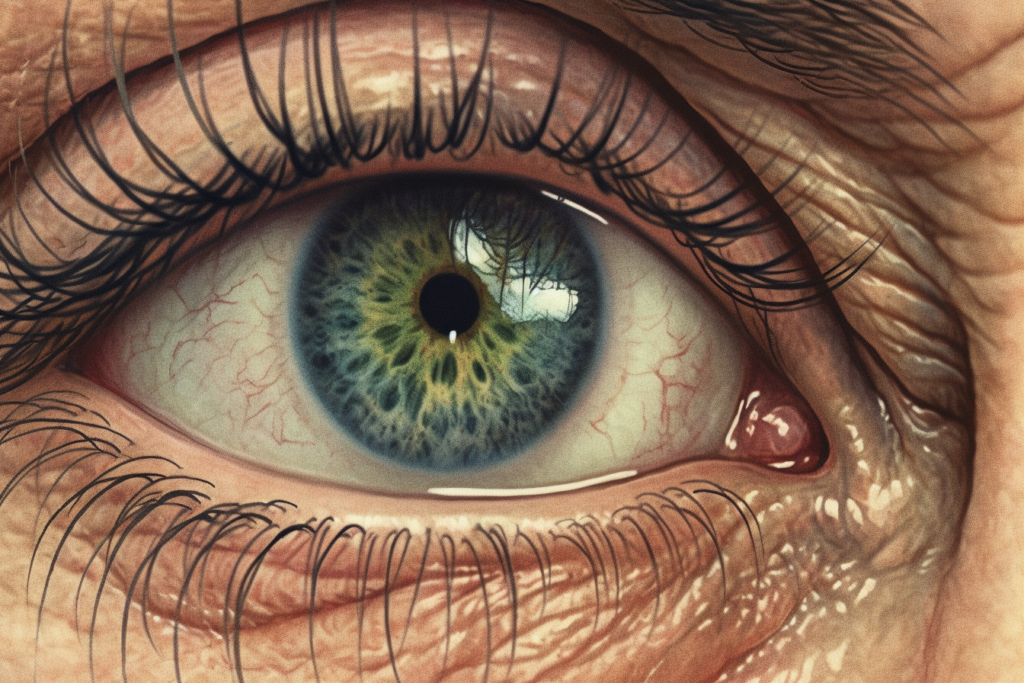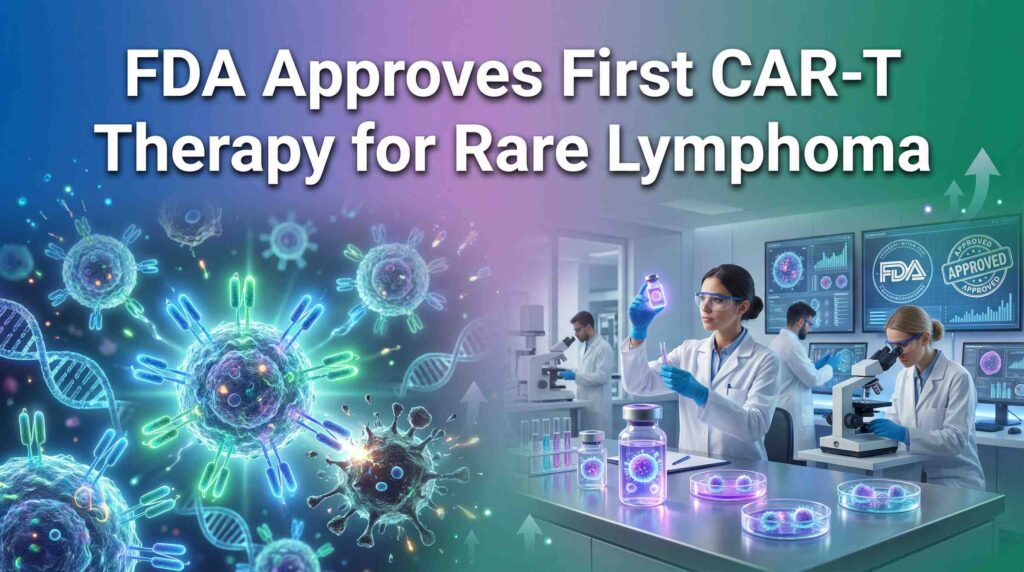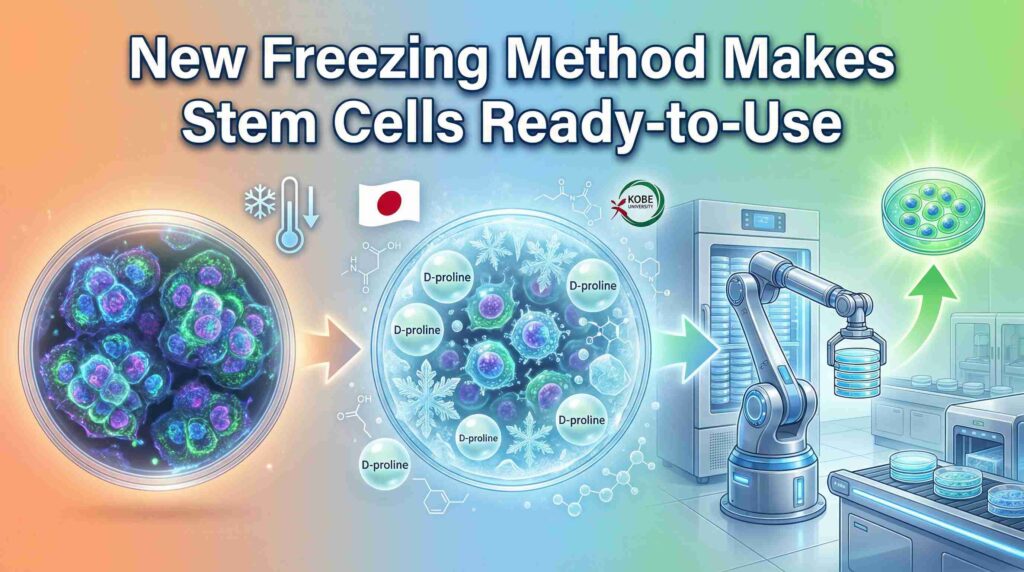Welcome to an exciting exploration of the fascinating world of stem cells and their potential to restore eyesight. The prospect is truly remarkable – harnessing the power of these tiny, yet incredibly potent cells to help individuals see the world anew.
Vision is undoubtedly one of the most precious senses. It opens up the world in all its vibrant colors and shapes, allows the witnessing of a loved one’s joy, and the beauty of a sunrise. However, for many people around the globe, these experiences are dimmed or lost entirely due to various eye conditions.
Consider this anecdote from the medical world. There was a patient, let’s call him Mr. Smith, who had been living with blurred vision for years due to cataracts. After a successful surgery, when the bandages were removed, his eyes welled up with tears as he looked around the room. The sharpness and clarity of everything around him was overwhelming. It was as if he was seeing the world for the first time.
This is the kind of life-changing impact that restoring eyesight can have. And that’s why the potential of stem cell therapies in this field is so exciting. It’s not just about the science, it’s about the people whose lives could be transformed.
In this article, the science behind stem cells will be delved into, understanding how they could play a role in treating eye conditions will be explored, and the current research and future possibilities in this field will be examined. So, prepare for an enlightening journey into the world of stem cells and vision restoration. Let the exploration begin!
Understanding Stem Cells
Stem cells are like the superheroes of the cellular world. They possess unique abilities that set them apart from other cells. But what exactly are these abilities, and what makes stem cells so special?
In the simplest terms, stem cells are the body’s raw materials. They are cells from which all other cells with specialized functions are generated. This process is called differentiation. Imagine a tree trunk branching out into several limbs, each limb then branching out further into twigs and leaves. Similarly, stem cells are like the tree trunk, and the differentiated cells are like the limbs, twigs, and leaves, each serving a specific function.
There are three main types of stem cells: Embryonic stem cells, Adult stem cells, and Induced pluripotent stem cells (iPSCs).
Embryonic stem cells are derived from embryos. These cells are pluripotent, meaning they can turn into more than 200 different cell types in the body. They’re like the ultimate shape-shifters!
Adult stem cells, on the other hand, are found in small quantities in most adult tissues, such as the skin or blood. Unlike embryonic stem cells, adult stem cells are often limited to differentiating into different cell types of their tissue of origin. Think of them as the specialists of the stem cell world.
Lastly, there are Induced pluripotent stem cells (iPSCs). These are adult cells that have been genetically reprogrammed to an embryonic stem cell-like state. In other words, scientists have found a way to take a specialized cell and rejuvenate it back into a pluripotent stem cell. It’s like turning back the clock!
The unique properties of stem cells – their ability to self-renew and differentiate – make them a potent tool in the field of regenerative medicine. In the next section, we’ll explore how these properties are being harnessed to revolutionize medical treatments.
Stem Cells in Medicine
Stem cells, with their unique abilities, have been making waves in the medical world. They hold the potential to revolutionize treatments for a range of diseases and conditions, from diabetes to heart disease, and yes, even vision loss. But how exactly do they do this?
The key lies in the power of regeneration. Remember how we talked about stem cells being the body’s raw materials? Well, in regenerative medicine, these cells are used to create new, healthy cells to replace diseased or damaged ones. It’s like having a reserve army of cells ready to repair the body from within!
Let’s take a moment to appreciate the magnitude of this. Consider a condition like heart disease, where parts of the heart muscle can become damaged. Traditional treatments might involve medication or surgery, but what if the damaged cells could be replaced with new, healthy ones? That’s the promise of stem cell therapies.
Or consider diabetes, a condition characterized by the body’s inability to produce enough insulin, a hormone made by beta cells in the pancreas. What if new beta cells could be created from stem cells and transplanted into the patient? This could potentially reduce dependence on insulin injections.
And it’s not just about treating diseases. Stem cells also have a role in medical research. Scientists can use stem cells to model diseases in the lab, study how diseases develop, and test new drugs and treatments. It’s like having a miniature laboratory within a petri dish!
In the realm of vision, stem cells offer exciting possibilities too. In the next section, we’ll delve into the anatomy of the eye, how vision works, and how stem cells could potentially help restore sight. Keep reading, the journey is just getting started!
Eye Anatomy and Vision
Before we dive into how stem cells can help restore vision, let’s take a moment to understand the complex and beautiful mechanism that is the human eye. It’s a marvel of biological engineering, designed to capture light and convert it into images, much like a high-tech camera.

The eye is composed of several key parts, each playing a crucial role in the process of vision. Here’s a quick tour:
- The cornea is the eye’s outermost layer. It’s the clear, dome-shaped surface that covers the front of the eye and helps focus light.
- The iris is the colored part of the eye, and it controls the size of the pupil, the opening that lets light into the eye.
- The lens sits behind the iris and further focuses the light onto the retina, the inner lining at the back of the eye.
- The retina is where the magic happens. It contains millions of light-sensitive cells called photoreceptors (rods for low light vision and cones for color vision) that convert light into electrical signals.
- These signals are then sent via the optic nerve to the brain, which interprets them as the images we see.
Now, imagine if any part of this intricate system gets damaged or diseased. The result could be blurred vision, partial or complete vision loss, depending on the affected area. This is where stem cells come into the picture.
With their ability to differentiate into various types of cells, stem cells could potentially be used to replace damaged cells in the eye, whether they’re in the cornea, the retina, or elsewhere. But how exactly does this work, and what are the common eye conditions that could potentially be treated with stem cells? Let’s explore that in the next section.
Common Causes of Vision Loss
Vision loss can occur due to a variety of reasons, many of which are linked to damage or disease affecting specific parts of the eye. Here, we’ll explore some of the most common causes of vision loss that stem cell therapies aim to address.
- Age-related macular degeneration (AMD): This condition primarily affects the macula, the part of the retina responsible for sharp, central vision. In AMD, damage to the macula results in blurred or distorted vision. It’s a leading cause of vision loss in people aged 60 and older.
- Glaucoma: This group of eye conditions is characterized by damage to the optic nerve, often due to abnormally high pressure in the eye. Glaucoma can lead to vision loss or blindness if not treated early.
- Diabetic retinopathy: This is a complication of diabetes that affects the retina. High blood sugar levels can cause damage to the blood vessels in the retina, leading to vision loss or even blindness.
- Retinitis pigmentosa: This is a group of rare, genetic disorders that involve a breakdown and loss of cells in the retina. It manifests as a gradual decline in vision, eventually leading to blindness.
These conditions, among others, represent significant challenges in the field of ophthalmology. Traditional treatments can help manage these conditions to some extent, but they often can’t reverse vision loss once it has occurred.
This is where the potential of stem cell therapies comes in. By harnessing the power of stem cells to regenerate and repair, scientists are exploring new ways to treat these conditions and restore vision. In the next section, we’ll delve into the current research and clinical trials involving stem cell therapies for vision restoration. The future of vision care is on the horizon, and it’s looking bright!
Stem Cell Therapies for Vision Restoration
Stem cell therapies are at the forefront of innovative treatments for vision restoration. Researchers worldwide are conducting clinical trials and studies to understand the potential of these therapies better. Let’s explore some of the recent advancements in this field.
- Retinal Pigment Epithelium Transplantation for Age-Related Macular Degeneration (AMD): A study led by Marco A. Zarbin and colleagues reported the first clinical trials of retinal pigment epithelium (RPE) transplantation for AMD. The preliminary results showed improvement in vision in some patients, evidence of transplant-host integration, and long-term survival of autologous induced pluripotent stem cell-derived RPE transplants. However, the study also highlighted some limitations, including limited RPE suspension survival in the AMD eye and limited tolerance for long-term systemic immune suppression in elderly patients1.
- Autologous Ocular Surface Epithelial Stem Cell Transplantation: A study by Samantha Bobba and colleagues demonstrated the successful transplantation of autologous limbal/conjunctival stem cells via a contact lens in patients with total and partial limbal stem cell deficiency. The study reported that a transparent avascular and clinically stable corneal epithelium was attained in 63% of the eyes at a median follow-up time of 2.5 years2.
- Gene Therapy for Vision Restoration: A review by Allison M. Keeler and colleagues discussed the progress in gene therapy for vision restoration. The review highlighted the potential of recombinant adeno-associated virus (rAAV) products for treating congenital forms of blindness3.
- Systemically Delivered p53 Nanoparticle for Solid Tumors: A phase I clinical trial led by Neil Senzer and colleagues reported the successful systemic delivery of the normal human tumor suppressor gene p53 using a liposomal nanodelivery complex. The study showed that the therapy was well tolerated and exhibited anticancer activity4.
These studies represent just a fraction of the ongoing research in the field of stem cell therapies for vision restoration. The potential of these therapies is immense, and with continued research and development, the future of vision care looks promising.
In the next section, we’ll discuss the challenges and ethical considerations in stem cell research and therapy.
Footnotes
- Concise Review: Update on Retinal Pigment Epithelium Transplantation for Age-Related Macular Degeneration ↩
- Clinical outcomes of xeno-free expansion and transplantation of autologous ocular surface epithelial stem cells via contact lens delivery: a prospective case series ↩
- Gene Therapy 2017: Progress and Future Directions ↩
- Phase I Study of a Systemically Delivered p53 Nanoparticle in Advanced Solid Tumors ↩
Challenges and Ethical Considerations
While the potential of stem cell therapies for vision restoration is immense, it’s important to acknowledge the challenges and ethical considerations that come with this territory. Let’s delve into some of these aspects.
Technical Challenges:
One of the main technical challenges in stem cell therapies is ensuring the survival, integration, and functionality of the transplanted cells in the host tissue. This is particularly challenging in the case of the eye, which is an immune-privileged site. Additionally, controlling the differentiation of stem cells into the desired cell type and ensuring they do not proliferate uncontrollably is a significant challenge.
Clinical Trials:
Conducting clinical trials for stem cell therapies presents its own set of challenges. These include designing appropriate control groups, ensuring long-term follow-up to assess safety and efficacy, and managing the high costs associated with these trials.
Regulatory Hurdles:
Regulatory bodies worldwide have stringent criteria for approving stem cell therapies. This is to ensure the safety and efficacy of these treatments. However, navigating these regulatory pathways can be complex and time-consuming.
Ethical Considerations:
The use of embryonic stem cells raises ethical concerns as they are derived from human embryos. While these cells have the potential to differentiate into any cell type, their use involves complex ethical and legal issues related to the source of embryos and the process of deriving stem cells.
Accessibility and Equity:
As with any advanced medical treatment, there are concerns about the accessibility and affordability of stem cell therapies. Ensuring these potentially life-changing treatments are available and affordable to all who need them is a significant challenge.
Despite these challenges, the field of stem cell therapies for vision restoration is advancing rapidly. With ongoing research, collaboration between scientists and clinicians, and dialogue with regulatory bodies and the public, these challenges can be addressed. In the next section, we’ll look at the future perspectives of stem cell therapies in vision restoration.
The Future of Stem Cell Therapies in Vision Restoration
The future of stem cell therapies in vision restoration is promising, with ongoing research and clinical trials paving the way for innovative treatments. Here are some key areas of focus for future research and development:
- Retinal Pigment Epithelium Transplantation for Age-Related Macular Degeneration (AMD): Future research will focus on overcoming the limitations identified in the initial clinical trials, such as improving the survival of RPE suspension in the AMD eye and finding alternatives to long-term systemic immune suppression in elderly patients1.
- Autologous Ocular Surface Epithelial Stem Cell Transplantation: Future studies will aim to improve the success rate of transplantation and extend the follow-up time to assess long-term outcomes2.
- Gene Therapy for Vision Restoration: Future research will continue to explore the potential of recombinant adeno-associated virus (rAAV) products for treating congenital forms of blindness3.
- Electrical Stimulation as a Means for Improving Vision: Future studies will aim to deepen our understanding of the underlying mechanisms governing clinical success and optimize stimulation parameters4.
- Commercialization of Anti-Aging Science: As the understanding of aging and its impact on various body systems, including vision, improves, there is potential for the development of therapies aimed at slowing aging itself5.
While the road ahead is filled with challenges, the potential benefits of stem cell therapies for vision restoration are immense. With continued advancements in stem cell research and technology, the future holds the promise of transformative treatments that could improve the lives of millions of people living with vision loss.
In the final section, we’ll summarize the key points of this article and provide a concluding statement.
Footnotes:
- Concise Review: Update on Retinal Pigment Epithelium Transplantation for Age-Related Macular Degeneration ↩
- Clinical outcomes of xeno-free expansion and transplantation of autologous ocular surface epithelial stem cells via contact lens delivery: a prospective case series ↩
- Gene Therapy 2017: Progress and Future Directions ↩
- Electrical Stimulation as a Means for Improving Vision ↩
- The Business of Anti-Aging Science ↩
Conclusion
The journey into the world of stem cells and their potential in restoring vision is indeed a fascinating one. From understanding the unique properties of stem cells to exploring their role in treating various eye conditions, it’s clear that stem cell therapies hold immense promise for the future of vision care.
We’ve delved into the science behind stem cells, the common causes of vision loss, and how stem cells could potentially address these conditions. We’ve also explored the current research and clinical trials in stem cell therapies for vision restoration, and looked at the challenges and ethical considerations in this field.
The future of stem cell therapies in vision restoration is promising, with ongoing research paving the way for innovative treatments. While there are challenges to overcome, the potential benefits of these therapies are immense. They offer hope for millions of people living with vision loss, promising not just improved vision, but a better quality of life.
As we continue to advance in our understanding and technology, the day may not be far when vision loss due to degenerative eye conditions could be effectively treated, or even reversed, using stem cell therapies. The future of vision care is on the horizon, and it’s looking bright!
Thank you for joining us on this enlightening journey into the world of stem cells and vision restoration. We hope this article has provided valuable insights and sparked your interest in this exciting field of medicine.


